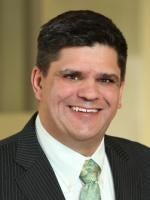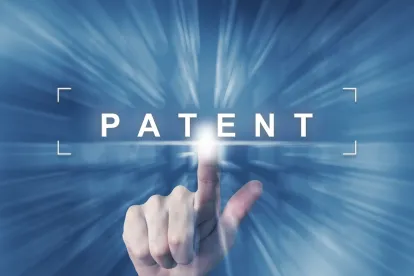In Godo Kaisha IP Bridge 1 v. TCL Commun. Tech. Holdings Ltd.,[1] the Federal Circuit definitively answered the question: “Who determines the standard-essentiality of the patent claims at issue—the court, as part of claim construction, or the jury, as part of its infringement analysis?” According to this precedential decision authored by Judge Kathleen O’Malley: “Where . . . there are material disputes of fact regarding whether asserted claims are in fact essential to all implementation of an industry standard, the question of essentiality must be resolved by the trier of fact in the context of an infringement trial.”[2] With this opinion, the Federal Circuit reaffirmed its holding in the 2010 decision Fujitsu Ltd. v. Netgear Inc. (“Fujitsu”)[3] and rejected an interpretation that sought to require district courts to assess the essentiality of an asserted claim to an industry standard as a part of their claim construction analysis.
Patent Infringement Action in the District of Delaware
In July 2015, Godo Kaisha IP Bridge 1 (“IP Bridge”) sued a number of TCL Communication entities[4] (“TCL”) for patent infringement in the District of Delaware.[5] IP Bridge accused TCL’s mobile devices of infringing two of IP Bridge’s patents[6] that allegedly covered portions of the Long-Term Evolution (“LTE”) telecommunications industry standard.[7] During a seven-day jury trial, IP Bridge relied on the methodology outlined in Fujitsu to establish infringement of a patent covering an industry standard and presented evidence demonstrating that: (1) its asserted claims were “essential” to mandatory sections of the LTE standard; and (2) the accused TCL products comply with the LTE standard. During its defense, TCL did not present any evidence to challenge IP Bridge’s showing of infringement under the Fujitsu methodology.[8] The jury returned a verdict finding TCL liable for infringement. After trial, TCL challenged the verdict in a JMOL contending that IP Bridge was not permitted to use the Fujitsu methodology because it had failed to ask the district court to assess essentiality of the asserted claims during claim construction. The district court rejected this argument and denied TCL’s JMOL. TCL appealed the denial of its JMOL to the Federal Circuit.
The Origins of the Fujitsu Methodology
It is worth briefly describing how the Fujitsu methodology came about. In Fujitsu Ltd. v. Netgear Inc.,[9] Plaintiffs had appealed a denial by the district court that prohibited Fujitsu from proving infringement by establishing that the asserted patent claims were “essential,” that is, necessary to practice the industry standard IEEE 802.11. On appeal, the Federal Circuit rejected such a prohibition and instead “[held] that a district court may rely on an industry standard in analyzing infringement.”[10] Specifically, while “agree[ing] that claims should be compared to the accused product to determine infringement,” the Federal Circuit recognized that“[i]f an accused product operates in accordance with a standard, then comparing the claims to that standard is the same as comparing the claims to the accused product. . . . [T]his approach [was accepted] in Dynacore where the court held a claim not infringed by comparing it to an industry standard rather than an accused product. An accused infringer is free to either prove that the claims do not cover all implementations of the standard or to prove that it does not practice the standard.”[11]
TCL’s Argument on Appeal
On appeal, TCL argued that Fujitsu did “not stand for the proposition that a patentee can prove infringement by convincing a jury at trial that its patents are standard essential and that the accused products practiced the standard.”[12] Rather, TCL asserted that “Fujitsu stands for the much more limited proposition that a patentee may show, during claim construction, that its claims cover all possible implementations of a standard. If the court in construing the claims, agrees, the plaintiff may attempt to prove infringement at trial by relying on the accused products compatibility with the standard.”[13] More pointedly, TCL argued that it was “the court (not the jury) [who] must make a threshold determine in construing the claims that ‘all implementations of a standard infringe the claims of a patent.”[14] The sole basis for TCL’s argument was the following phrase from Fujitsu “[i]f a court determines that all implementations of a standard infringed the claims of a patent….”[15] Extrapolating from this partial quote, TCL erroneously asserted that the determination of “essentiality” was a question for the district court to decide during claim construction. TCL concluded, therefore, that because IP Bridge failed to seek an appropriate claim construction from the district court, and, thus, the district court did not determine “essentiality” (i.e., whether all possible implementations of the standard were indeed covered by the asserted claims), IP Bridge was not entitled to use the Fujitsu methodology to prove infringement. As a consequence of these failures, TCL argued that IP Bridge was limited in establishing infringement through a particularized showing of how the accused products actually met every limitation of TCL’s asserted claims.[16]
The Federal Circuit’s Opinion
In its precedential opinion, the Federal Circuit rejected TCL’s arguments and affirmed the district court’s denial of JMOL by finding sufficient evidence supporting the jury’s verdict of infringement.
In refuting TCL’s interpretation of Fujitsu, the Federal Circuit expressly held that the determination of the standard-essentiality of an asserted patent claim is the domain of the trial of fact (i.e., the jury) as the part of its infringement analysis at trial.[17] The Federal Circuit explained that TCL interpreted Fujitsu[18] out of context. Fujitsu was made in the context of a summary judgment determination where there were no genuine disputes of fact. Summary judgment does not, however, change a question of fact into a question of law.
The Federal Circuit further stated that determining standard-essentiality by a judge during claim construction would be impractical. Claim construction analysis focuses on intrinsic evidence and determining the meaning of the claims. Whereas essentiality is a fact question about whether the claim elements read onto mandatory portions of a standard that standard-compliant devices must incorporate. This, the Federal Circuit explained, was more akin to comparing claim limitations to an accused product in an infringement analysis.
In rejecting TCL’s arguments, the Federal Circuit endorsed its past holdings in Ericsson, Inc. v. D-Link Sys., Inc.[19] and Dynacore Holdings Corp. v. U.S. Philips Corp.[20] that allowed plaintiffs to prove infringement of a standard essential patent by showing that an accused product complies with the associated industry standard:[21] “[I]f an accused product operates in accordance with a standard, then comparing the claims to that standard is the same as comparing the claims to the accused product.”[22]
The Federal Circuit emphasized that the Fujitsu methodology (for proving infringement by showing compliance with industry standard) applies “only where[] a patent covers mandatory aspects of a standard. Under this methodology, the Federal Circuit recognized an accused infringer is “free to either prove that the claims do not cover all implementations of the standard or to prove that it does not practice the standard.”[23] Further, while a claim may cover an industry standard, it does not necessarily establish that all standard-compliant devices implement the standard in the same way.” As a result, if a claim does not cover all implementations of an industry standard, then infringement must still be proven using the typical methodology of comparing the claims to the accused devices.
Concluding Thoughts
Godo Kaisha IP Bridge 1 v. TCL Commun. Tech. Holdings Ltd makes clear that the Fujitsu methodology is a valid approach for establishing patent infringement via compliance with industry standards. It provides patent owners with a relatively straightforward way of enforcing standard-essential patents, without having to obtain through discovery the oftentimes confidential internal details of accused products — if those products are identified as being compliant with the relevant industry standard.
Godo Kaisha IP Bridge 1 also articulates some avenues for challenging infringement of standard essential patents. Defendants should investigate whether the relevant provisions of the industry standard implicated by the infringement allegations are mandatory and not merely optional. If it can be shown that there are avenues for complying with a standard’s provisions that do not fall under the assert claim’s limitation, the patent holder will have to rely on comparison of the claim against the accused product rather than by the proxy of the industry standard.
[1] 967 F.3d 1380, Case No. 2019-2215, 2020 U.S. App. LEXIS 24482 (Fed. Cir. Aug. 4, 2020).
[2] 2020 U.S. App. LEXIS 24482 at *11-12.
[3] 620 F.3d 1321 (Fed. Cir. 2010).
[4] TCL Communication Technology Holdings Limited, TCT Mobile Limited, TCT Mobile (US) Inc., and TCT Mobile, Inc.
[5] Godo Kaisha IP Bridge 1 v. TCL Commun. Tech. Holdings Ltd., Case No. 1:15-cv-00634-JFB-SRF, Senior Judge Joseph F. Batallion.
[6] The asserted patents included U.S. 8,385,239 entitled “Radio Transmission Device and Radio Transmission Method” and U.S. 8,351,538 entitled “Control Channel Signaling for Triggering the Independent Transmission of a Channel Quality Indicator.” A third patent, U.S. 7,373,295 entitled “Speech Coder and Speech Decoder,” was also asserted but its claims were found invalid for indefiniteness under 35 U.S.C §112 during claim construction and it was not addressed at trial.
[7] See Godo Kaisha IP Bridge 1 v. TCL Commun. Tech. Holdings Ltd., No. 2019-2215, 2020 U.S. App. LEXIS 24482, at *1-3 (Fed. Cir. Aug. 4, 2020).
[8] See Godo Kaisha IP Bridge 1 v. TCL Commun. Tech. Holdings Ltd., No. 15-634-JFB, 2019 U.S. Dist. LEXIS 70750, at *8-9 (D. Del. Apr. 24, 2019). Apparently, TCL’s expert admitted during cross-examination that a showing using the Fujitsu methodology would indeed show infringement.
[9] 620 F.3d 1321 (Fed. Cir. 2010).
[10] Fujitsu 620 F.3d at 1327.
[11] Id. (identifying the holding in Dynacore Holdings Corp. v. U.S. Philips Corp., 363 F.3d 1263 (Fed. Cir. 2004)).
[12] Godo Kaisha IP Bridge 1 v. TCL Commun. Tech. Holdings Ltd., Corrected Nonconfidential Opening Brief of Defendants’/Appellants TCL Communication Technology Holdings Limited, TCT Mobile Limited, TCT Mobile (US) Inc., and TCT Mobile, Inc. (Dkt. No. 31), at p. 26, Case No. 19-2215, Dec. 20, 2019 (“Appellants’ Corrected Nonconfidential Opening Brief”).
[13] Id. at p. 26-27.
[14] Id. at p. 32.
[15] Id. at p. 32, see also Godo Kaisha IP Bridge 1, 2020 U.S. App. LEXIS 24482, at *6-*7.
[16] 620 F.3d at 1327; quoted in part by Appellants’ Corrected Nonconfidential Opening Brief (Dkt No. 31) at 27.
[17] See Godo Kaisha IP Bridge, 967 F.3d 1380, 2020 U.S. App. LEXIS 24482 at *11-*12 (Fed. Cir. 2020).
[18] Id. at *8 (quoting Fujitsu 620 F.3d at 1327: “If a district court construes the claims and finds that the reach of the claims includes any device that practices a standard, then this can be sufficient for a finding of infringement.”
[19] 773 F.3d 1201, 1209 (Fed. Cir. 2014) (because a “standard requires that devices utilize specific technology, compliant devices necessarily infringe certain claims . . . cover[ing] technology incorporated into the standard”).
[20] 363 F.3d 1263 (Fed. Cir. 2004) (affirming non-infringement judgment because patentee did not show that a particular claim limitation was mandatory in the standard).
[21] Godo Kaisha IP Bridge, 967 F.3d 1380, 2020 U.S. App. LEXIS 24482 at *5-*6.
[22] Id. at *8.
[23] Id. (quoting Fujitsu 620 F.3d at 1327).




 />i
/>i

